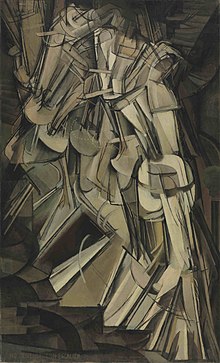
In this excerpt from Benson's House, Elizabeth- the prodigal granddaughter of Justin and Sarah Benson- returns to New York to debut her art exhibit- Postcards from the Western World- at the newly constructed Taggart Benson Museum. Elizabeth was nine when she began her formal studies of art with Cecelia Beaux at the Pennsylvania Academy of Fine Art. She stayed with Cecelia until enrolling in Goldsmiths College, London, England, at the age of sixteen. Elizabeth was now twenty- five and had been abroad for nine years. At the time, Cecelia had gained a renowned reputation as being one of the most talented traditionalist portrait artist of the era.However, she found the direction of contemporary art undisciplined, and denounced many of its current contributions.
Danielle Watson was Elizabeth's lifelong best friend, and the current President of Chariot Records. They were staying at Elizabeth's mother's home on MacDougal Street, a few streets away from Benson's House. The reunion of the Post Impressionist painter, and the head of a thriving recording company, marked the beginning of a revolution of sight and sound that was about to create a new era of contemporary pop culture .
Elizabeth put her nightgown on as she carefully listened for an indication her mother had retired for the night. When she heard her mother’s bedroom door close, she quietly exited her room and crept over to her brother’s former bedroom where Danielle was spending the night. She cautiously entered to find Danielle in her nightgown, sitting on the bed with her back against the headboard, and her knees pulled towards her chin.
“I attended The Armory Show in 1913. Danielle confessed softly.
"What!” Elizabeth cried with whispered enthusiasm as she sat on the side of the bed.
Danielle nodded her head swiftly.
“I’ve wanted to tell you all night; I went with Cecelia.”
“She never told me that.” Elizabeth stated. “I know she considers the moderns popularity a passing fad, and didn’t have much to say favorably regarding the exhibit.”
“She hated it.” Danielle claimed. “She said the works lacked traditional disciplines and said something about the subject matter being as defiling as those depicted by the Ashcan Boy’s?”
Elizabeth placed her hands over her mouth to muffle her laughter.
“I knew members of The Ashcan Society in Philadelphia. Robert Henri once told me that his style and subject matter- both of which Cecelia refers to as corruptive- was inspired by my grandmother. He told me The Eight, as he described them, were influenced by Melrose’s 1887 exhibit at The Taggart Benson Gallery. They aligned with the acceptance of realism Melrose had adapted from his former associate: Sir John Everett Millair. Henri believes the goal of both members of The Ashcan School, and of Urban Romanticism, are attempts to illustrate realist aesthetics in urban settings. He’s right, and while I learned discipline from Cecelia Beaux, Henri made me recognize the skills I had instinctively adopted from my grandmother- speed and composition.
The exhibit referred to was the International Exhibition of Modern Art, which was held in New York City's 69th Regiment Armory, on Lexington Avenue.For many New Yorkers it was their first glimpse of the progressive art movements that had become the rage of Europe.
Here in America, Traditionalists were shocked by the new expressions of Avant-Garde,Cubism, and Fauvist, and rejected the movements with the same convictions as Cecelia Beaux. The newly conceived expressions were considered short lived mockeries of art disciplines. However, The Metropoloitan Museum of Art's purchase of Paul Cézanne's displayed landscape,View of the Domaine Saint-Joseph, at the exhibit,was regarded by the public as the museum's acceptance of Post- Impressionism, and a signal of the art world's accepted integration of modernism. Progressive cultural ideology was entering the American Psyche.
The Armory show displayed standards of art that challenged the times. Realism was shown with distorted departure by the Painterliness expressions of Fauvisms with contributions by artists such as Henri Matisse and Maurice Denis. The influences of Avant- Garde pushed new levels of early Modernism, with displays reflecting the advance stages of Cubist expressions by Pablo Picasso and Marcel Duchamp.This freedom of expression soon entered the era of Dadaism, which declared all objects as art, and formed the foundation of Surrealism and the beginning of our current pop culture.
It was an era of new developments and expressions unlimited by conventional standards.The social introduction of Edison's inventions also created a new medium of sight and sound. Both music and art formulated with limitless adaptation. Jazz cultivated without boundaries; imagery without perimeters.Pop culture began to span its wings in the nest of a new tomorrow.
I often stress the necessity of this thinking in our current cultural climate. Unproven concepts are often ignored, with a false conviction that proven strategies determine the criteria of mass appeal. The story of Benson's House is enacted in a history of pop culture proving conventional wisdom cannot determine the will of the people's taste. Perhaps it is time for a Dada renaissance, striping the shackles of conformity, and allowing for experimentation to give way to new expressions. Unconventional thinking breeds new ideas. It's what caused Surrealism in art; Jazz in music. It's what led to Jackson Pollock and Elvis Presley; Andy Warhol and The Beatles.
The limits of this post, however, prevents me from an extensive examination of The Armory influence, but I encourage all to take a moment some evening and research the show on the internet. View the paintings,study the artists, understand the genius that was unleashed with meaningless free expression.
KARAWANE
Wir können nicht wie die Hunnen auf einen Fanggrund gehen, ihn vernichten und dann einfach mit der Karawane zum nächsten weiterziehen, ohne uns um das Hinterlassene zu kümmern.
Hugo Ball
No comments:
Post a Comment